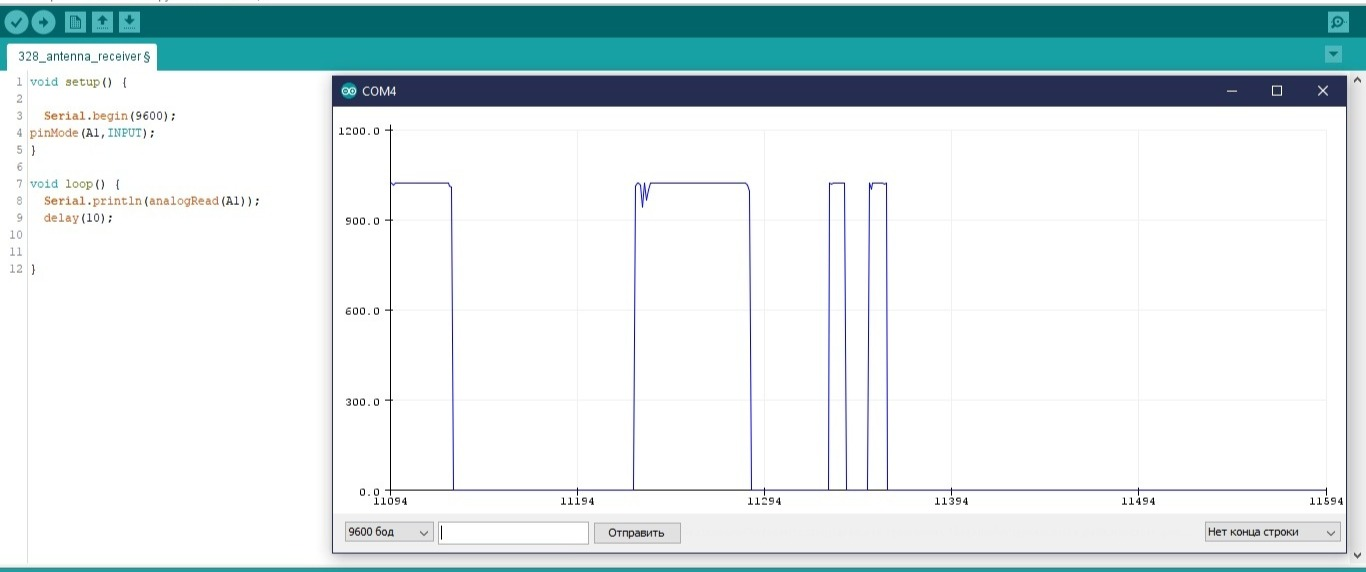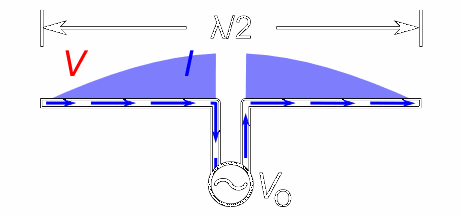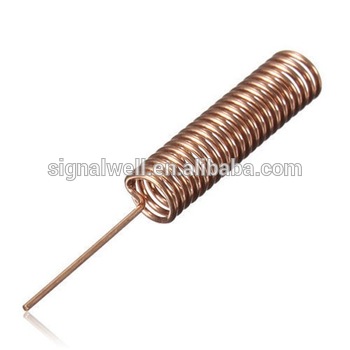The short answer is: you'll need at least a bit more circuitry to make this work. Depending on the end goal: buy a sender + receiver kit or revert to analog electronic cirtuits.
The long anwser:
First things first, since you use a vanila (meaning: using the arduino environment) arduino mega, the sample frequency of the PWM is set to 490Hz (arduino pwm frequencies), this could maximally result in a signal of 245Hz (Nyquist frequency). Which is right in the ELF frequencies.
This 245Hz corresponds to a wavelenght of about 1200km. Meaning that a half wave dipole would need to span about 600km ... I doubt this will fit on that breadboard.
Of course nothing stops you from using smaller antennas, ones that are only fractions of the wavelength. But you'll also reduce the received energy by the antenna as you make it smaller.
(ELF was and is still used in submarine communications, their solution to the energy problem is to use very long trailing wire antennas. This does not even go into the fact that at 490 Hz samplerate you would be making a square wave at 245Hz rather than a sine. But then with the selected 100Hz you have an even lower fequency!
Now, apart from the minimal capability for your antenna to pickup any energy, it has not been coupled in a controlled way. Impedance mismatches will make sure that most of the enery is not even radiated properly, and on the receiving side the same effect will further limit the reception.
And generally speaking the signals coming of an antenna are very weak at best, possibly in the microvolt range. And the arduino adc measures in the milivolt range. A factor of a 1000 times bigger. This explains why you would not see any received sine. To have anything useful you'd need to build a very sensitive ampifier stage that is filtering out all frequencies except your signal. The fact that you see the reaction on the output when you touch the antenna is because the human body is not a bad signal receiver, albeit not a very high performing antenna. (In terms of directionality or signal selectivity. I just picks up pretty much anything.)
Also know that designing antennas and their properties is almost as much an art as it is science! Nothing to feel bad about.
Just as a sidenote: I've done similar experiments years back. Just as a demonstration you can send out a pwm tone on a pin with a long wire as antenna. Next you can use a simple old analog radio to pickup the signal. If you give it some time and effort you'll be listening to the Mario theme played by and arduino through a radio.
So in conclusion and depending on your end goal:
- If you want to set up a communication channel: buy a sender receiver kit of ebay and use it as a serial bridge.
- If you want to learn about electromagnetic communication: go back to the basics and build a few basic circuits. (Pro tip: breadboard are pretty much the worst basis for such circuits due to parasitic influences!)




